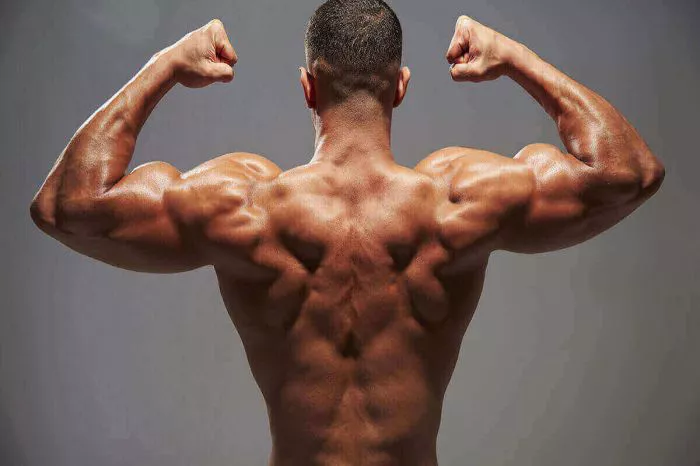When it comes to back training, the term “creating a Christmas tree” refers to developing the muscles of the upper and lower back in such a way that they resemble the shape of a Christmas tree when well-defined and muscular. This aesthetic look is highly sought after by bodybuilders and fitness enthusiasts alike, as it signifies strength, symmetry, and a well-developed physique. Achieving a “Christmas tree” back requires a combination of targeted exercises, proper form, progressive overload, and attention to detail. In this guide, we’ll explore the anatomy of the back, effective training strategies, and key exercises to help you sculpt your own Christmas tree back.
Anatomy of the Back:
Before diving into the training strategies, it’s essential to understand the anatomy of the back muscles and how they contribute to the overall shape and definition of the “Christmas tree” look.
Latissimus Dorsi (Lats): The latissimus dorsi muscles are the largest muscles of the back and play a significant role in creating width and thickness. They originate from the lower spine and pelvis and attach to the upper arm bone (humerus). Well-developed lats contribute to the V-taper appearance from the waist to the shoulders.
Trapezius (Traps): The trapezius muscles are located in the upper back and neck region and are divided into three main regions: the upper traps, middle traps, and lower traps. Developed traps add thickness and definition to the upper back and shoulders.
Rhomboids: The rhomboid muscles are located between the shoulder blades and help retract and stabilize the shoulder blades. Strong and well-developed rhomboids contribute to overall back thickness and symmetry.
Erector Spinae: The erector spinae muscles run vertically along the spine and play a crucial role in spinal extension and posture. Developing the erector spinae muscles can add depth and definition to the lower back, creating the “Christmas tree” appearance.
Training Strategies for Building a Christmas Tree Back:
Focus on Compound Movements: Compound exercises that target multiple muscle groups simultaneously are key for building overall back size and strength. Incorporate exercises such as deadlifts, pull-ups, rows, and pulldowns into your training routine to effectively stimulate the back muscles.
Progressive Overload: To continue making progress and stimulating muscle growth, progressively increase the weight, reps, or sets of your back exercises over time. This principle of progressive overload ensures that the muscles are continually challenged and stimulated for growth.
Mind-Muscle Connection: Focus on establishing a strong mind-muscle connection during back exercises to ensure proper muscle activation and engagement. Concentrate on squeezing and contracting the back muscles with each repetition to maximize muscle recruitment.
Variety and Variation: Incorporate a variety of back exercises and training modalities into your routine to target different muscle fibers and angles. Experiment with different grips, hand placements, and equipment (e.g., barbells, dumbbells, cables) to keep your workouts challenging and stimulating.
Volume and Frequency: Aim for adequate training volume and frequency to effectively stimulate muscle growth and recovery. Include back training sessions 1-2 times per week, with each session consisting of 3-4 exercises targeting different areas of the back.
Proper Form and Technique: Focus on maintaining proper form and technique during back exercises to minimize the risk of injury and maximize muscle recruitment. Keep your back straight, chest lifted, and shoulders pulled back and down to ensure proper spinal alignment and muscle activation.
Key Exercises for Building a Christmas Tree Back:
Deadlifts: Deadlifts are a compound exercise that targets the entire posterior chain, including the lower back, glutes, and hamstrings. Conventional deadlifts, sumo deadlifts, and Romanian deadlifts are all effective variations for building back strength and size.
Pull-Ups/Chin-Ups: Pull-ups and chin-ups are excellent bodyweight exercises that target the lats, biceps, and upper back. Variations such as wide-grip, narrow-grip, and weighted pull-ups can be used to target different areas of the back.
Barbell Rows: Barbell rows are a compound exercise that targets the lats, rhomboids, and traps. Bent-over rows, pendlay rows, and T-bar rows are all effective variations for building back thickness and strength.
Lat Pulldowns: Lat pulldowns are a machine-based exercise that targets the lats, biceps, and upper back. Use a variety of grips and hand positions (wide, narrow, underhand) to target different areas of the back.
Seated Cable Rows: Seated cable rows are an effective isolation exercise that targets the lats, rhomboids, and traps. Focus on pulling the weight towards your midsection while keeping your back straight and chest lifted.
Face Pulls: Face pulls are a great exercise for targeting the rear deltoids, traps, and rhomboids. Use a cable machine with a rope attachment and pull the weight towards your face, focusing on squeezing the shoulder blades together at the top of the movement.
Sample Christmas Tree Back Workout:
Here’s a sample back workout that incorporates a variety of exercises to target all areas of the back:
Deadlifts: 4 sets x 6-8 reps
Pull-Ups/Chin-Ups: 3 sets x max reps
Barbell Rows: 4 sets x 8-10 reps
Lat Pulldowns: 3 sets x 10-12 reps
Seated Cable Rows: 3 sets x 10-12 reps
Face Pulls: 3 sets x 12-15 reps
Conclusion:
Building a Christmas tree back requires a combination of targeted exercises, proper form, progressive overload, and attention to detail. By focusing on compound movements, establishing a strong mind-muscle connection, and incorporating a variety of exercises into your routine, you can effectively develop the muscles of the upper and lower back to achieve the desired aesthetic look. Remember to prioritize proper form, progressive overload, and consistency in your training to maximize muscle growth and achieve your fitness goals. With dedication and effort, you can sculpt a strong, symmetrical, and well-defined Christmas tree back that showcases your hard work and dedication to training.
Related Topics:
Why is overhead press so difficult?


